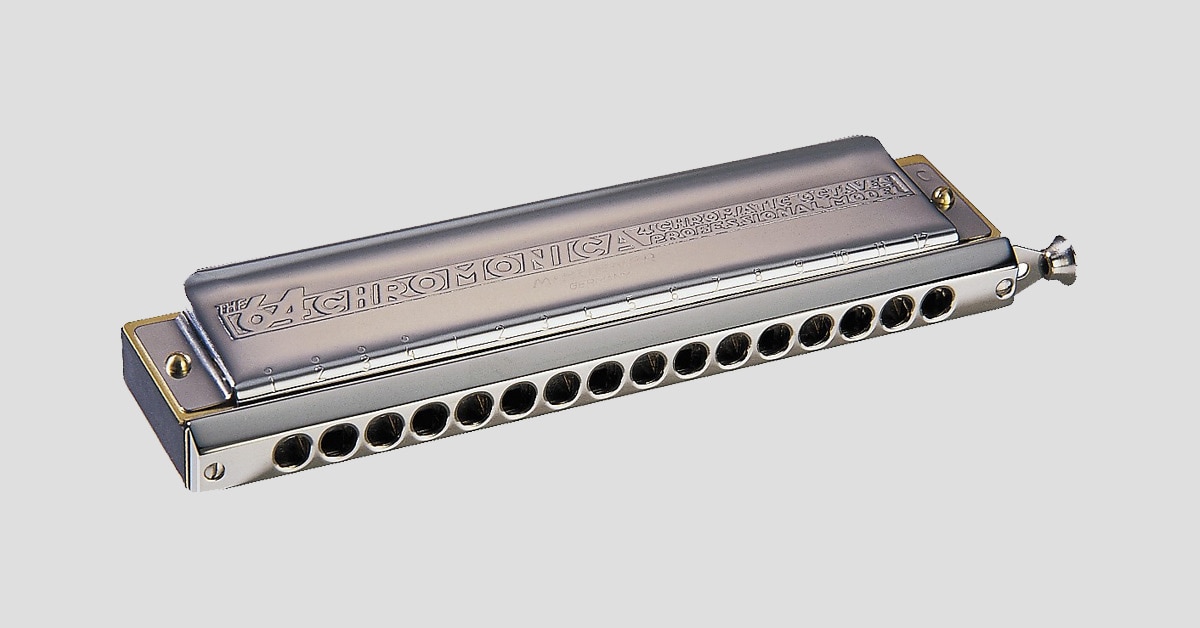When it comes to easy playability, affordability and portability, it’s hard to beat a harmonica. Despite their modest size and cost, harmonicas are capable of producing an amazing array of tones, and this versatility is reflected in the music genres in which the mighty little mouth harp plays a part. From the more obvious categories such as blues, country, and rock to more surprising musical territory such as jazz and classical music, the harmonica with its often human-like voice easily fits in.
In this guide, we’ll look at the many types of harmonicas that are available and pinpoint those that make sense for beginners as well as harp players and other musicians looking to expand their repertoires.
Table of Contents
Types of harmonicas
Diatonic harmonicas
Chromatic harmonicas
Tremolo harmonicas
Specialty harmonicas
Chord harmonicas
Orchestral harmonicas
Tools to hone your harp skills
Going electric
Harmonica-friendly mics
Harmonica-friendly amplifiers
We can help you on your harmonica journey
Types of harmonicas
Though there are a number of specialty harmonicas, the three most common varieties fall into one of three categories based on how they are tuned: diatonic, chromatic, and tremolo. We’ll focus mainly on these while touching on a few of the less common harmonica types.
If you want to dive right in, you can browse the huge Musician’s Friend selection of all types of harmonicas here.
Diatonic harmonicas
The most common type of harmonica you’ll encounter in pop, blues and folk music—diatonic harmonicas are designed to play in a specific key. That said, overblowing and note-bending techniques plus playing in alternate “positions” makes it possible to play a diatonic in keys and modes other than its “official” key. A couple of players, Howard Levy and Carlos Del Junco, have developed an overblowing technique with which they play chromatically using a humble 10-hole diatonic harp.
Blues harp players usually perform in what’s called “cross harp” or “second position.” This involves playing a harmonica that’s tuned to a perfect fourth below the key the music’s written in. If a song is in the key of C, an F harmonica will be used. Most blues use the notes of a pentatonic scale, and playing a G-tuned harp gives you access to notes that complement the pentatonic C scale, especially on draw notes—those on which you inhale to produce those wailing “bent” notes that are a cornerstone of blues harp technique.
There are a number of other positions that skilled harp players use to mesh with other instruments and create various effects. Cupping your hands around the harp and using your tongue to block and unblock holes are some of the ways to create rhythmic chordal effects and tones. You’ll find numerous online resources as well as harmonica books and tutorials that explain these techniques in detail. We’ll make several recommendations on excellent harp tutorials below.
A diatonic harmonica’s simplicity makes it a great choice for the beginner. Most harmonica teachers recommend starting out with a 10-hole diatonic harmonica tuned to the key of C.
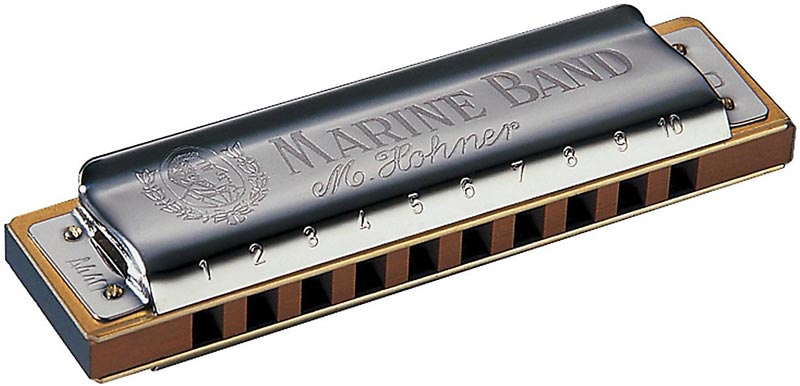
The Hohner 1896 Marine Band 10-hole diatonic harmonica in the key of C makes a great beginner’s instrument. Marine Bands have been used by all the great blues harp players including Sonny Boy Williamson, Little Walter and many more.
As you shop the huge selection of harmonicas at Musician's Friend, you’ll come across many variations on the basic diatonic harmonica.Take for example the Lee Oskar line of harmonicas. Designed by the harp player who gave the band War its distinctive sound, some Lee Oskar models are tuned to minor and other non-standard scales. Many harp players like their bright, penetrating sound and the fact the company sells replacement reed plates so you can refurbish an older harp rather than buying a new one.

The Lee Oskar Harmonic Minor Harmonica comes in a range of keys that have altered tuning schemes to make playing gypsy jazz, Eastern folk music and other genres much easier than standard-tuned diatonics. They have a smooth plastic comb that some players find easier on the lips than standard wood combs. If you feel your chops on harp are at a dead-end, try one of these to explore exciting new playing modes.
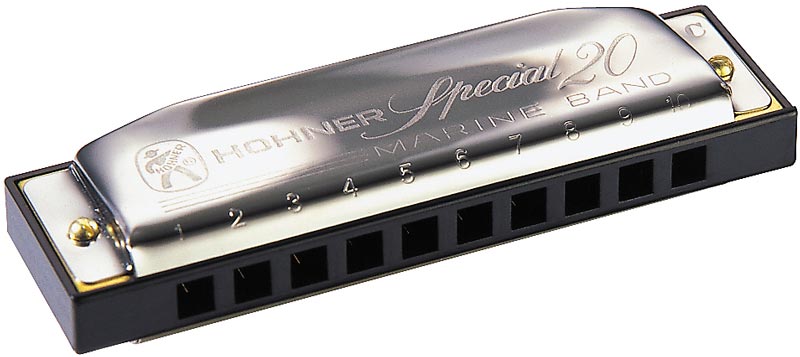
Another popular 10-hole diatonic, the Hohner Special 20 is also well suited to beginners with its standard major-scale tuning. An airtight plastic comb prevents swelling that can affect wood combs. Its easy-bending reeds are favored by many blues players.
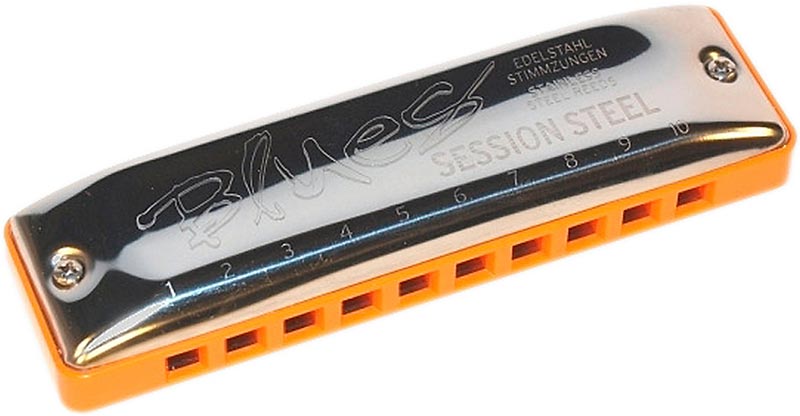
The Seydel Blues Session has hefty stainless steel reeds that produce a lot of volume and its wider hole spacing allows beginners to play single notes more easily.
Most harp players end up with a collection of diatonic harmonicas from various makers in a range of keys. Since their cost is far more modest than say, guitars, building a collection of harps to suit various styles of music and situations is easy to do. We recommend you try a number of different models to discover which instruments suit your playing style and the sound you’re going for.
Chromatic harmonicas
Most chromatic harmonicas have a button-activated lever that directs air to two separate reed plates that include all the notes in the 12-tone western scale. With sufficient skill, you can play just about any scale or mode using the chromatic’s “gear shift.”
The larger reeds in the chromatic are somewhat harder to bend and overblow than their diatonic counterparts. But thanks to their heft, the chromatic is capable of producing some very rich-sounding chords and effects. Many blues harp players such as Little Walter, Rod Piazza and George “Harmonica” Smith have used chromatics to generate fat tones that have led to the blues fan term “Mississippi saxophone.”
In the hands of a virtuoso like Toots Thielman, a chromatic harmonica can be used to play complex jazz scales with lightning-fast melodic runs that you’d more likely associate with a saxophone. Stevie Wonder is another master of the chromatic harmonica. His harp solos on “Isn’t She Lovely” offer a master class in overblowing techniques.
Chromatic harmonicas are more difficult to play than diatonics. Therefore, we recommend beginning with a diatonic and stepping up when you’re ready to take on a more challenging instrument. Learning to first play in all positions on a diatonic will allow you to graduate more easily to a chromatic. Even though chromatics are nominally tuned to the key of C or G, in actuality, if you learn all the appropriate scales and positions, you can play virtually any music that uses the standard 12-tone scale.
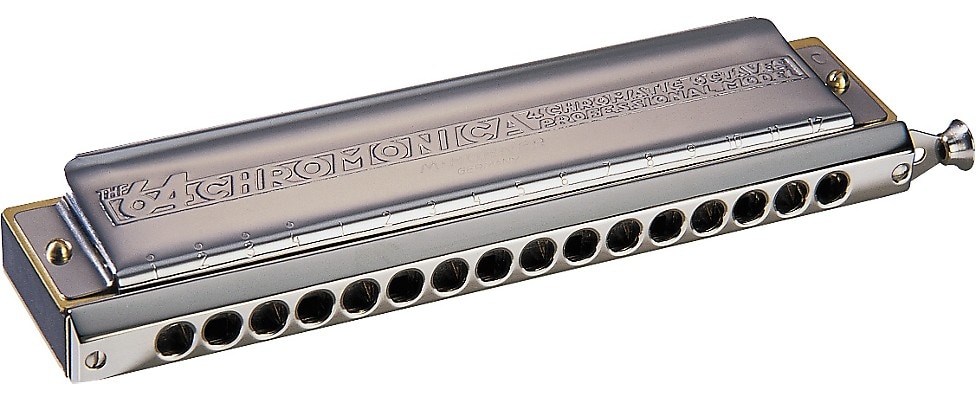
The Hohner 280/64 Chromonica 64 Chromatic Harmonica is the choice of blues and jazz musicians seeking a bigger, fatter tone along with the versatility of a four-octave range.
Tremolo harmonicas
Tremolo harmonicas, also sometimes referred to as “echo” harmonicas, produce their distinctive warbling sound through the use of two reeds per note, one tuned slightly sharp, the other slightly flat. The difference between the waveforms created by the paired reeds causes the beating effect that’s somewhat akin to the shimmering sound of a 12-string guitar that has paired strings tuned an octave apart.
Chromatic tremolo harmonicas are popular in Asian rock and pop music. Diatonic tremolo harps are sometimes used in folk and pop music, and produce a rustic tone that’s ideal for playing cowboy songs like “Red River Valley” around the campfire.
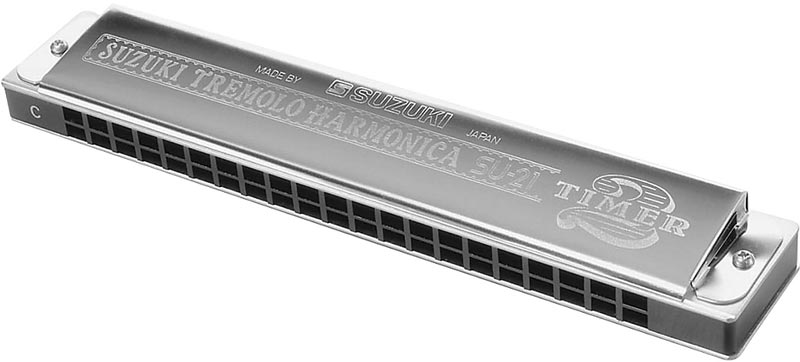
The Suzuki 2 Timer Tremolo Harmonica is available in 21- and 24-note models and produces warm, accordion-like tones. It adds interesting coloration to country, pop and folk melodies.
Specialty harmonicas
Though far less common than the types we’ve already discussed, specialty harmonicas are popular for use in harmonica ensembles and orchestral settings. Here’s a brief overview:
Chord harmonicas
These are usually large instruments that can produce up to 48 different chords and are typically laid out in blocks of four-note clusters. Each note usually has two reeds tuned an octave apart. Chord harmonicas provide rhythmic and melodic support in harmonica ensembles.
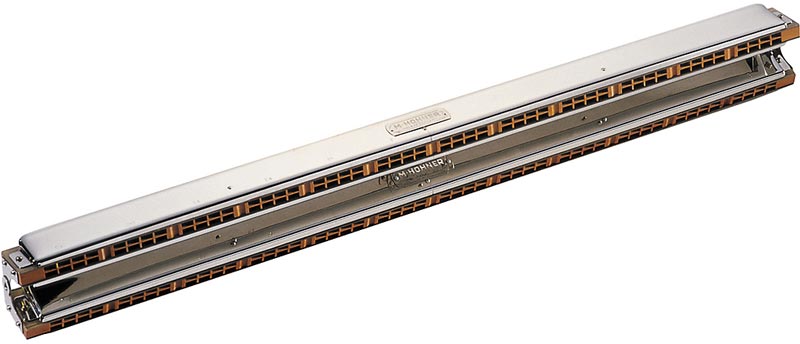
The huge Hohner 267/384 48 Chord Harmonica is made up of two separate instruments that are hinged together and produce an array of major, 7th, augmented, and diminished chords.
Orchestral harmonicas
Also made to be played in harmonica ensembles, these come in various pitch ranges and note-layout arrangements. You’ll find both diatonic and chromatic models.
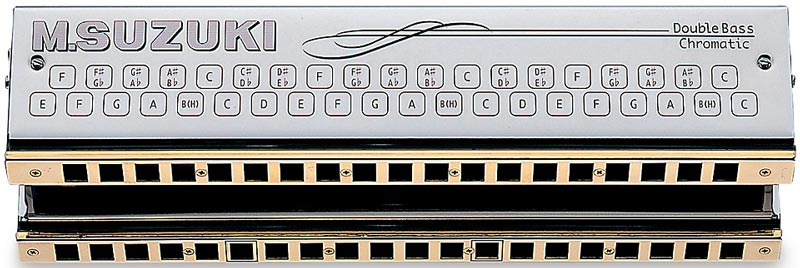
The 39-hole Suzuki Orchestral Double Bass Harmonica has paired reeds tuned an octave apart and covers two full chromatic octaves.
Tools to hone your harp skills
Whether you’re looking to spice up your acoustic guitar performances with some harp playing or going for the big, honking sound of electrified blues harp, there’s a great selection of harmonica tutorials at Musician’s Friend.
To whet your appetite, here are a few top sellers that have helped everyone from beginners to intermediate and experienced harpists develop and polish their chops:
- A smart choice for the absolute beginner, the Mel Bay Easiest Harmonica Book will teach you the basics of playing a diatonic harmonica. You’ll also learn a simplified form of notation used in many harmonica methods books and other media.
- Once you’ve developed your basic blues harp skills, the Hal Leonard Blues Harmonica Collection Songbook offers a great way to master songs recorded by icons such as Little Walter and Sonny Boy Williamson. Using easy-to-follow tablature, it provides accurate transcriptions of 40 blues harp classics.
- Intended for the advanced harmonica player who wants to learn chromatic harmonica techniques from a virtuoso, the Hal Leonard Toots Thielemans - The Jazz Master Class Series DVD is a rosetta stone. Toots demonstrates his enormous facility on the chromatic, discusses teaching approaches with students and performs some jazz classics.
Going electric
As blues bands became increasingly electrified in the 1950s, harp players such as Little Walter began using inexpensive “bullet” microphones with crystal elements that were designed for police and taxi dispatch use. They plugged these mics into various tube guitar and bass amps, then by cupping their hands tightly around the harp and mic, produced a fat, distorted sound that has become the holy grail for Chicago-style blues tone.
Harmonica-friendly mics
The modern harmonica player has a lot of options where mics and amps are concerned. Country and acoustic blues harp players often simply play through the band’s PA system using various types of dynamic vocal mics mounted on a stand. They use their hands and head-shaking techniques to create vibrato and trill effects on sustained notes.
Electric blues and rock harp players more typically play with the the mic cupped in their hands forming a tight seal. In conjunction with their lips and mouth this creates a sound chamber that can be manipulated to create soulful, heavy tones.
As with blues and rock electric guitarists, the electric blues harp player typically seeks a punchy, distorted tone with plenty of midrange. In part this is achieved by overdriving the preamp stage of the amplifier to produce pleasing overtone-rich harmonics. The downside of this approach is that the mic is prone to pick up frequencies from PA and amp speakers, resulting in howling feedback. Experienced blues harpists combat this by keeping the harmonica tightly enclosed in their hands and avoiding stage positions that are likely to trigger feedback through the mic. Some harp mics include a volume knob that can help prevent those dreaded squeals while others, by virtue of their small size, can easily be shielded by the player’s hands.
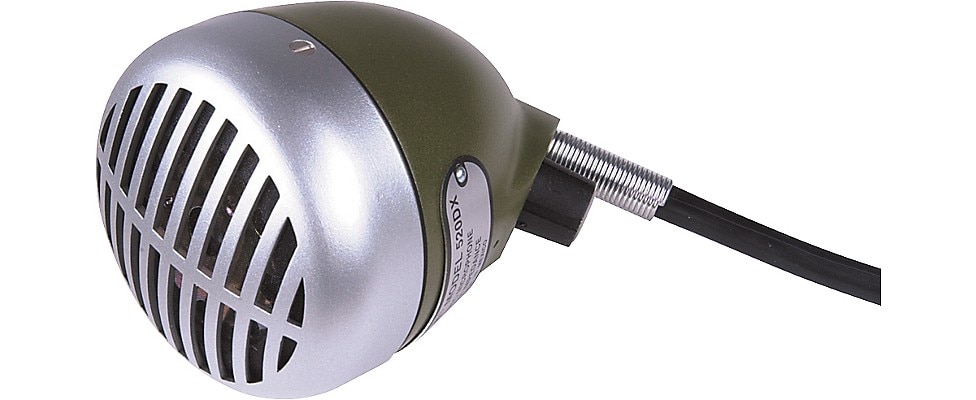
Based on the Astatic crystal element mics used back in the 1950s, the Shure 520DX Green Bullet produces the fat, gritty sound of electrified blues. A built-in volume knob helps control feedback.
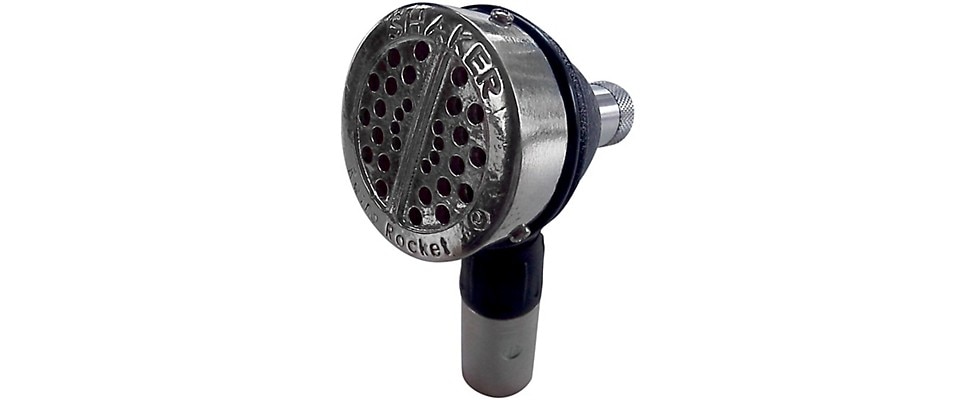
Thanks to its mini-bullet shape and crystal element, the Shaker Retro Rocket Harmonica Microphone is easy to cup and emulates the classic sounds of amplified harp while being sensitive to the technique of each player.
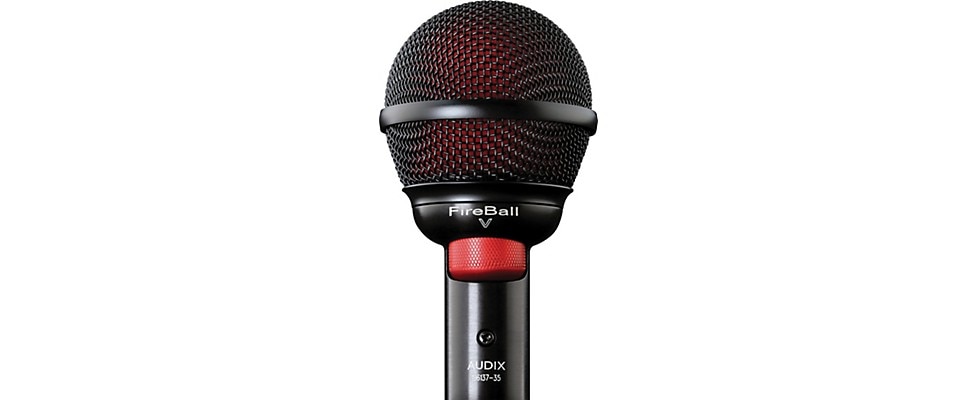
Harp players who prefer a brighter, cleaner sound recommend the Audix Fireball Harmonica Microphone. It has a convenient built-in volume control and gets high marks for feedback-resistance.
Explore the complete selection of harmonica microphones at Musician's Friend.
Harmonica-friendly amplifiers
Back in the day, harp players used whatever amps were available—typically small tube amps intended for guitar. The larger Fender Bassman Combo with its four 10” speakers was also a popular choice since it generates plenty of punchy volume to compete with drums and heavily amplified guitars and is sensitive to playing dynamics. (More on this killer combo in a minute.)
Today, things haven’t changed too much. Most harp players still look to smaller tube guitar combo amps to generate the sounds they love. In larger venues, they usually close-mic their combo’s speaker(s) sending the signal to the PA system via the mixing console.
Here are some of the more popular amp choices:
The Fender Super-Champ X2 Guitar Combo Amp has a 15W power stage that gets really loud, and when overdriven produces the harmonically rich distortion that’s ideal for creating the towering “Mississippi saxophone” sound pioneered by artists like Little Walter Jacobs and Big Walter Horton. It’s very portable, and can be easily miked when playing in larger venues.
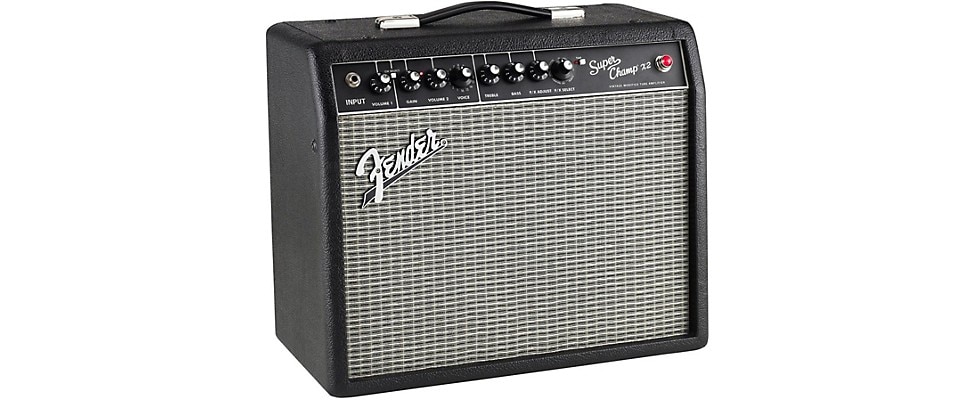
With its pair of 6V6 power tubes and 10” speaker, the Fender Super-Champ generates plenty of warm, overdriven tone. A voicing knob gives you 16 additional vintage amp tones to experiment with and a USB output provides speaker-emulated digital recording possibilities.
If you’re looking for more power and have a bigger budget, the Fender 65 Princeton Reverb is an authentic re-creation of the original beloved by both harp players and guitarists for decades. It’s equipped with three 12AX7 tubes and a 12AT7 in the preamp, dual Groove Tubes 6V6s in the power stage, and a single 5AR4 rectifier tube that together with the 10” Jensen speaker pour out retro “blackface” tone.
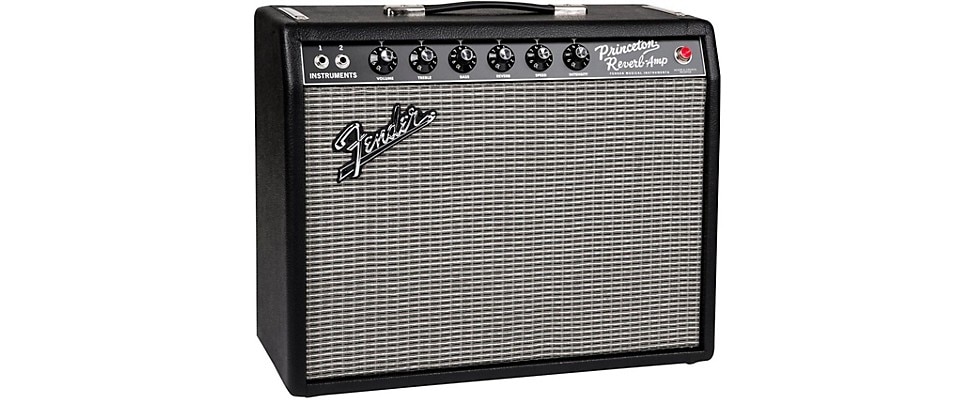
With 15W of Class A tube power, the Fender 65 Princeton Reverb Combo has the muscle to be heard, even in the context of loud electric blues bands. It’s easily overdriven to produce massive slabs of warm distortion.
As mentioned above, The Fender Fender Vintage Reissue '59 Bassman Combo is a popular choice with harp players looking for the best in fat harmonica tone at volume levels that don’t require close-miking the cabinet. Cranking out a huge 50W via improved USA-made GT-6L6 output tubes, it has a biasing pot enabling tone tweakers to experiment with other tubes. (Some harp pros switch out the 12AX7 preamp tubes for lower-gain tubes such as the 12AY7 and 12AU7, which can help curb feedback problems.)
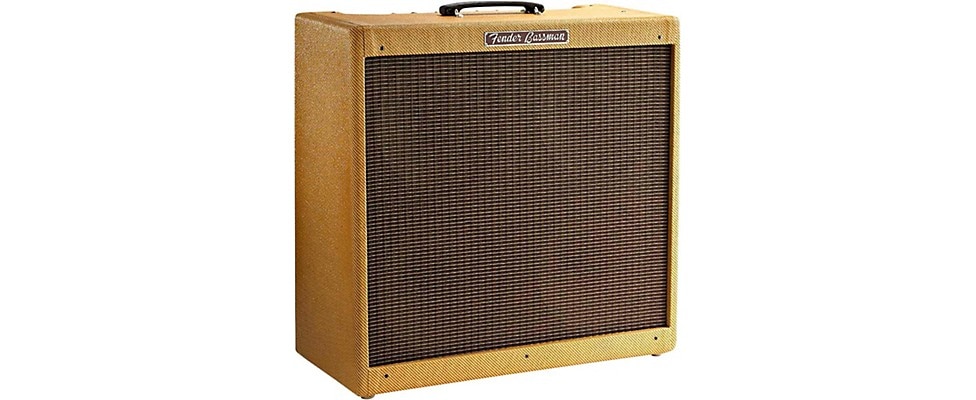
For many professional harp players, nothing beats the Fender 59 Bassman Combo. The four 10” speakers driven by a 50W all-tube power amp produce massive tone with grit, bite and plenty of warmth.
While most electric blues harp players don’t use a lot of effects, reverb is one popular effect that can add a lot of drama to the sound of the harmonica. A built-in reverb, especially an authentic spring or plate-type reverb tank is considered a worthy feature by many harpists. If your amp doesn’t have reverb, you can always use an external reverb stompbox giving you the advantage of hands-free control.
We can help you on your harmonica journey
If you’re still unsure how to get started with harmonica, give us a call at 800-449-9128. Our Gear Heads will be happy to help you find the right harmonica(s), mic, amp, or learning materials to get you on your way to a lifetime of harp-playing fun.





































































































































